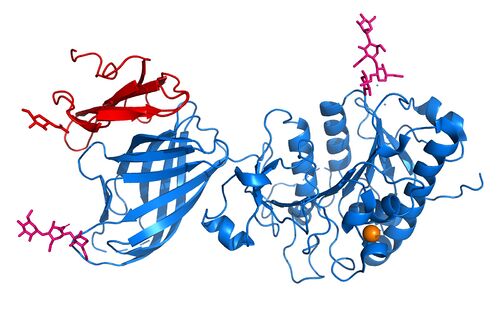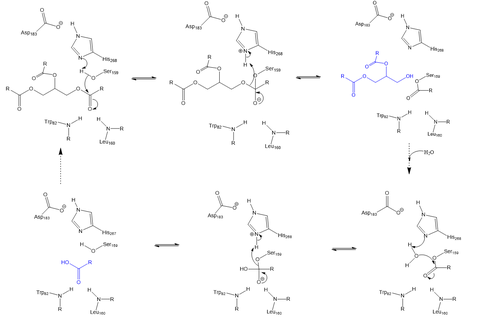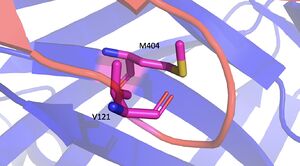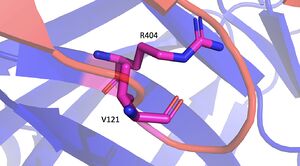User:Dustin Soe/Sandbox 1
From Proteopedia
(Difference between revisions)
| Line 10: | Line 10: | ||
==Mechanism== | ==Mechanism== | ||
Lipoprotein Lipase functions to catalyze the hydrolysis of one ester bond of triglycerides. It does this by utilizing a simple serine hydrolase mechanism, in which it uses a <scene name='87/877516/Catalytic_triad_master/1'>Catalytic Triad</scene> composed of Asp183, His268, and Ser159 to catalyze the hydrolysis. His268 serves as a base catalyst by deprotonating Ser159, which can then serve as the nucleophile. The transition state of the catalysis is stabilized by the <scene name='87/877516/Oxyanion_hole_master/1'>Oxyanion Hole</scene> composed of Trp82 and Leu160. The hydrolysis results in the formation of one free fatty acid and a glycerol with two fatty acid tails. | Lipoprotein Lipase functions to catalyze the hydrolysis of one ester bond of triglycerides. It does this by utilizing a simple serine hydrolase mechanism, in which it uses a <scene name='87/877516/Catalytic_triad_master/1'>Catalytic Triad</scene> composed of Asp183, His268, and Ser159 to catalyze the hydrolysis. His268 serves as a base catalyst by deprotonating Ser159, which can then serve as the nucleophile. The transition state of the catalysis is stabilized by the <scene name='87/877516/Oxyanion_hole_master/1'>Oxyanion Hole</scene> composed of Trp82 and Leu160. The hydrolysis results in the formation of one free fatty acid and a glycerol with two fatty acid tails. | ||
| - | [[Image:LPL_mech.png| | + | [[Image:LPL_mech.png|500 px|left|thumb|Serine hydrolase mechanism utilized by LPL to catalyze the breakdown of one ester bond of a triglyceride. Compounds colored blue are the products of the hydrolysis.]] |
== Relevance & Disease == | == Relevance & Disease == | ||
Revision as of 19:56, 5 April 2021
Lipoprotein Lipase (LPL)
| |||||||||||




